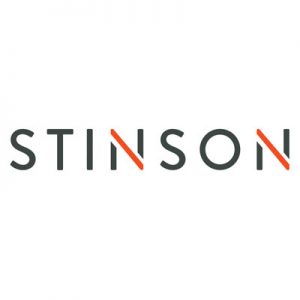By Lucas L. Schneider, Of Counsel
Special asset groups, already confronted by the portfolio’s challenges bestowed upon them, face additional hurdles unique from their colleagues at lending institutions. Today’s current economic climate, combined with the novel ways in which business must be conducted to safely distance, adds yet another complexity. Valuable face time in meetings with customers, reasonably foreseeable business and social climates in the relatively short term are factors that are no longer predictable. Several pieces of reminder guidance, structured around communication, diligence in managing loan files, and the tools for addressing the alternative paths the lending relationship may head, help position special asset groups and loan officers in mitigating lender liability risks and managing their loans and workouts, especially during a downturn in the economy.
Communication
The seminal theme is that clear, retained, and timely communication with borrowers, even when the information may be generally unpalatable or explain undesirable potential consequences, is critical to mitigate the risk of lender liability claims. Communication, or its evil counterpart miscommunication, is a paramount consideration toward reducing such risk. By way of example, in the case In re POC Properties, LLC, 580 B.R. 504, 507 (Bankr. E.D. Wis. 2017), a lender going through its own acquisition quietly downgraded loans with a longtime borrower and had its special assets management unit review the loans, all without informing the borrower’s principals. This precipitated months of negotiations that were not fruitful, culminating in the borrower’s principals filing a state court action against the lender alleging bad faith and misrepresentation, which then became the basis for objections to the lender’s successor’s Proofs of Claim in bankruptcy court.
Now that is the worst-case scenario — a lender working through the middle of its own acquisition, adapting to changing policies and personnel, while also performing its day job of managing its borrower relationships — unfortunately resulting in principals of the borrower claiming that had they known sooner of the troubled cloud over their loans, they would have had time to refinance and fully compensate the lender. Ultimately, the bankruptcy court gave credence to the borrower’s lender liability claims, offsetting and reducing the lender’s successor’s claims.
For a local example, the Tenth Circuit Court of Appeals in a case from 1993 upheld a jury’s finding that the bank breached an implied covenant of good faith and fair dealing when the bank under the contractual terms, exercised an assignment provision for funds derived from good operators, without first notifying the borrower and giving the borrower an opportunity to cure. These notice and cure “rights” were not derived from the contractual arrangement but from the relationship and course of dealing between the borrower and lender, as the case further elaborated. This leads to the next logical question of both what a SAG or loan officer anticipates in today’s business environment, including risks and how they should proactively do so?
Loan File Review
From an anticipation standpoint, when a special asset group, or better yet, the loan officer on a still-healthy loan that is up for renewal, has an opportunity to review the loan file for any potential problems sooner rather than later, that diligence can yield dividends in risk management. The following is an exemplar overview of what to review:
- Review all loan documents to confirm that all have been signed by all parties (including all notary blocks) and that all documents have been properly dated;
- Review all loan documents to confirm that all referenced exhibits have been attached (especially legal descriptions);
- For loans secured by real property, ensure the file contains the final Lender’s Title Insurance Policy and that the legal description in the policy matches the legal description in your deed of trust. Also, review to confirm there were no additional exceptions to title added after closing and before issuance of the policy;
- Conduct a UCC search to confirm that liens that were paid at closing have been released and that no new junior liens have been filed without your permission. If there is a junior lienor, consider whether an inter-creditor agreement might be appropriate if there is overlapping collateral; and
- Obtain updated good standing certificates from the state where the entity is registered and from the state(s) where the entity does business.
By way of example for “why” this is important in risk management, in a 1996 Colorado Supreme Court case, the creditor, in line with its strategy, successfully relied upon the lack of signatures on several credit agreements to win its case. The case emphasized the strength of the credit agreement statute of fraud in Colorado, codified at § 38-10-124(2), which generally precludes either a debtor or a creditor maintaining an action or a claim relating to a credit agreement where the credit agreement is unsigned by the opponent and for more than $25 thousand. That partially executed guaranty in a loan file, when everyone can recall seeing the borrower sign it, but no one can find the borrower-signed copy, creates the lender’s risk of being unable to enforce the guaranty. Resolution, through the execution of a new and retroactive guaranty, can be collaborative and amiable, though, when the borrower is seeking a deferral or extension on maturity, and the creditor performs a loan file review understand such issues. The adage that a stitch in time saves nine is certainly applicable, especially in or near the down portion of the economic cycle when the potential of having to rely upon guarantees and first position in a bankruptcy is a real possibility.
Then, with the borrower and lender in sync on communication and all of the boxes checked in the loan review, the lender still may have to revisit workout routes with its borrower with the loan file in good form due to a contraction in the economy.
Tools in the Deferral Negotiations
When that time arrives, when the loan is faltering due to decreasing borrower revenue and the borrower needs an extension, but the lender requires added assurances, there are proverbial arrows in the lender’s quiver. In the current market, where softening has occurred in the hospitality and restaurant spaces, for example, the borrowers remain the most effective value-enhancing operators of the collateral when the country reopens, in return for loan deferrals, lenders have the option of requesting additional collateral. One often-utilized tool for lenders is to have the borrower add increased operating funds, in an amount calculated to assist the borrower in weathering the downturn, to a deposit account in the control of the lender, thereby using the advantages of UCC Article 9 that provide the lender a priority secured interest in the deposit account.
Harkening back to the clear communication advice, the key is to be transparent with the borrower in what is being requested and what is being offered. In a 2006 Colorado Court of Appeals case that led to protracted litigation to rectify matters for the creditor, the day after the lender conducted a field audit that revealed the borrowers had defrauded the lender for years on the extent and value of collateral, the lender’s representative presented the borrowers deeds of trust to add collateral. The borrowers alleged that the lender’s representative’s verbal statements at the meeting caused the borrowers to believe the lending relationship would continue, and the lender would forbear from calling the loan due. This was not the case, and the lender filed suit on the loan within a month. Clarity, and a follow-up email or letter, may have thwarted the borrowers’ subsequent litigious plans much sooner. Despite that, the lender requesting in good faith additional collateral, in and of itself and consisting of a secured interest in land, in this case, was a tactful strategy.
Conclusion
The difficulty in discussing negative topics while maintaining the relationship, the chaos of a multi-party deal closing, the strain of renegotiating the lending relationship can all contribute to understandable oversight. That said, the above cyclical reminders on improving communication, reviewing and repairing the loan file, and using effective tools to maintain the loan relationship distill to two concepts — diligence and forethought — that, when appropriately applied, redirect the situation to a more positive outcome. The present economic stall is an opportunity to revisit these concepts for the much-needed refresher that lenders and their counsel periodically require.








